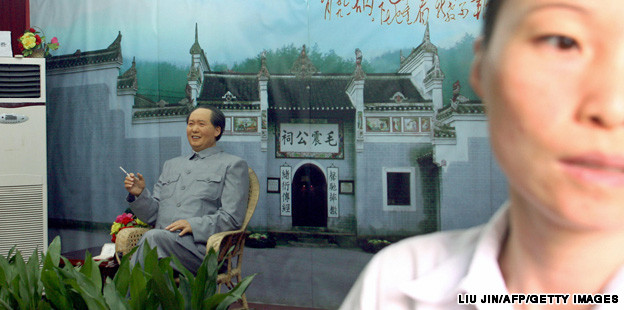 For many, it seems like it was just yesterday that we were watching the tanks and?women with guns?march in Beijing for the 60th anniversary of the PRC; but China is now pulling the party hats back out as it prepares for the 90th anniversary of the founding of its Communist party next July.
For many, it seems like it was just yesterday that we were watching the tanks and?women with guns?march in Beijing for the 60th anniversary of the PRC; but China is now pulling the party hats back out as it prepares for the 90th anniversary of the founding of its Communist party next July.
Part of the pre-party festivities leading up to July 1, according to recent piece in the?Telegraph, is developing many of the country?s once famous revolutionary sites that young Chinese are now visiting to reconnect with China’s past.
Dubbed Red Tourism, this type of reverence for national sites is not new, but has taken on additional importance in recent years. Now supported by the government, Red Tourism is seen by many as a way to unify, or dare we say harmonize, Chinese society, which has come under a growing amount of stress in the past few years.
“Chinese people cannot forget their history, and the best way to do that is to go and remember it, to study it — that’s where Red Tourism comes from,” said Chen Doushu, the head of the agency organizing the red tours.
The?Telegraph?identified five sites as the major stops on a Red Tourism trail — sadly, the first meeting place of the Communist Party in Shanghai?s Xintiandi doesn?t make the cut.
The top spots are: Yan’an, known as Chairman Mao’s wartime base (people go to see the caves where the party plotted many of its major decisions), Shaoshan where Mao was born (don?t miss the?hongshao rou?there, a Mao favorite), Jinggang Mountain, which boasts more than 100 “revolutionary” attractions, and Zunyi and Nanchang.
Do we see a?road trip?in the making?
According to the Chinese National Tourism Administration, the number of visitors at the country’s top 10 Red Tourism sites has grown by more than 50 percent a year for the last few years.
Although these five sites make up the main trail of China?s Red Tourism, other lesser known sites are benefiting from the trend, like Qionghai, Hainan.
Although Hainan is mainly known for its beaches, Red tourists can visit Pan Xianying, a 95-year-old mother of seven who is one of three surviving members of an all-female Red Army unit that was based in Qionghai.
Qionghai authorities have decided to capitalize on the town?s importance as the base of the all-female detachment, starting tours of the group’s former training grounds and meeting spots.
360 people went on the tours in April.
More than creating a spirit of national unity as the government hopes, Red Tourism also creates jobs and investment.
Click here to read more.

